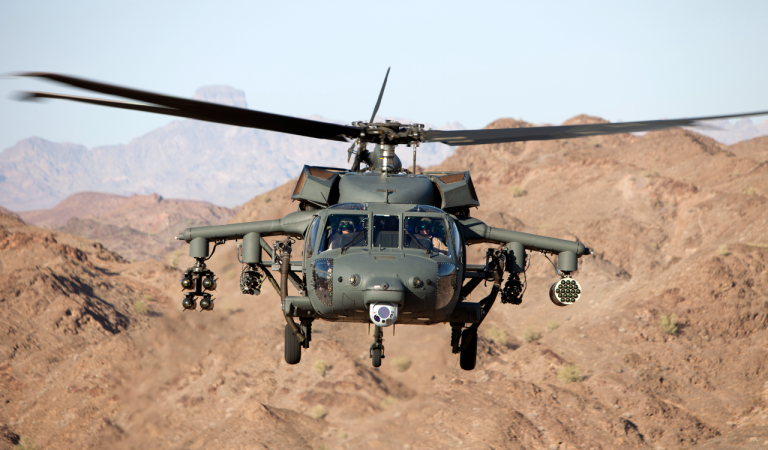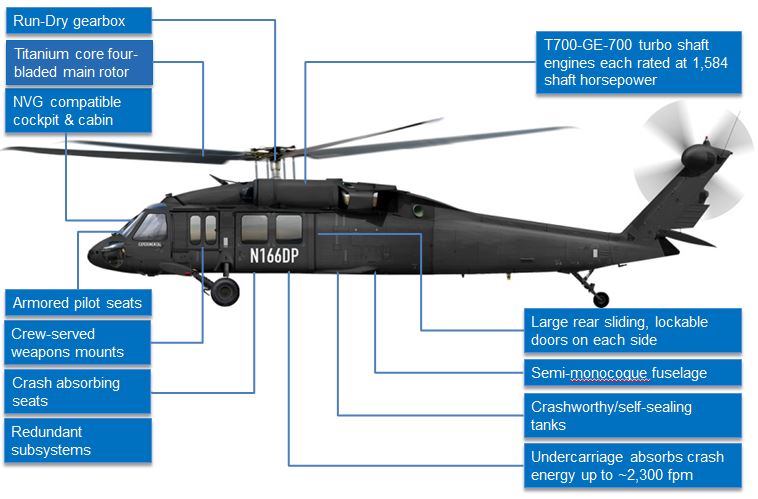Why the UH 60 Continues To Be a Favorite Selection Among Army Worldwide
Why the UH 60 Continues To Be a Favorite Selection Among Army Worldwide
Blog Article
UH-60: Innovations in Modern Helicopter Layout
The UH-60 helicopter stands as a criteria in contemporary aeronautics, showcasing substantial advancements in style and innovation that cater to the advancing demands of army procedures. As we explore the advancement and crucial technologies of the UH-60, it becomes necessary to take into consideration how these advancements affect not only current applications however additionally the future landscape of helicopter design.

Advancement of the UH-60
The development of the UH-60 Black Hawk helicopter represents a significant landmark in aerospace engineering and military aeronautics. Presented in the late 1970s, the UH-60 was developed by Sikorsky Airplane to satisfy the United States Military's requirement for a versatile energy helicopter with the ability of carrying out a variety of objectives. Its design stressed speed, ability to move, and resilience, establishing new criteria for operational efficiency.
The UH-60 features an unique four-blade blades system, which enhances lift and security, allowing it to run effectively in diverse settings. Its airframe is constructed from innovative composite materials, adding to a reduction in weight while preserving architectural integrity. The helicopter's style additionally integrates better aerodynamics, which enhances gas performance and enhances variety.
For many years, the Black Hawk has gone through numerous upgrades to enhance its abilities, consisting of boosted engines, advanced flight control systems, and modular systems for simple upkeep and flexibility. The helicopter's ability to carry out objectives varying from army transportation to medical emptying has strengthened its duty as a foundation of united state military operations. The UH-60 Black Hawk remains a prime instance of exactly how innovation in helicopter design can considerably affect army performance and functional flexibility.
Advanced Avionics Systems
Developments in avionics systems have transformed the capabilities of modern helicopters like the UH-60 Black Hawk, improving operational efficiency and situational understanding (UH 60). The combination of advanced avionics permits enhanced trip, communication, and navigation management, making the UH-60 more versatile in varied goal profiles
One of the key attributes is the innovative digital cabin, which utilizes multifunction screens that supply real-time data, ensuring pilots have prompt access to important trip information. This streamlining of info reduces pilot workload and boosts decision-making processes throughout complicated operations. Additionally, the unification of GPS and inertial navigation systems makes it possible for exact positioning and path preparation, boosting mission implementation in difficult environments.
Moreover, progressed avionics systems enhance interaction abilities through safe and secure data web links and voice communication systems, allowing smooth coordination with ground pressures and other airplane. The integration of automated flight control systems better adds to boosted stability and control, specifically in negative climate condition or during low-altitude maneuvers.
Engine and Performance Enhancements
Engine efficiency in contemporary helicopters has actually taken a significant jump forward, driven by advancements that boost power, performance, and reliability. At the leading edge of these innovations is the adoption of more effective turboshaft engines, specifically those employing find here sophisticated products and technologies that allow greater temperature level tolerances and enhanced thrust capacities. The UH-60 Black Hawk, as an example, utilizes the T700-GE-701C engine, which features a dual-channel, full-authority electronic engine control system. This system boosts efficiency while optimizing fuel usage and lowering upkeep needs.
In addition, the assimilation of engine wellness surveillance systems permits real-time diagnostics and anticipating upkeep, dramatically boosting functional integrity. These systems not just alert crews to potential issues before they become critical but additionally promote extra reliable upkeep organizing, thus decreasing downtime.

Materials and Structural Innovations
Current developments in products and architectural style have changed contemporary helicopter building, boosting both efficiency and durability. The introduction of advanced composite materials, such as carbon fiber reinforced polymers, webpage has considerably decreased weight while preserving structural integrity. This shift not only improves fuel performance yet additionally raises haul ability, enabling helicopters like the UH-60 to do more diverse missions.
In addition, advancements in aluminum alloys and titanium components have actually added to enhanced resistance to deterioration and exhaustion, prolonging the lifespan of essential airframe components. The tactical use these products has brought about a decrease in maintenance needs and enhanced overall functional readiness.

In addition, the combination of computer-aided layout (CAD) and additive manufacturing modern technologies has made it possible for much more lightweight structures and intricate geometries, optimizing the wind resistant efficiency of helicopter designs. These improvements facilitate fast prototyping and manufacturing, allowing makers to react swiftly to progressing goal requirements.
Safety And Security and Survivability Attributes
Security and survivability functions in image source contemporary helicopter style have ended up being critical, showing the enhancing demands for mission effectiveness in challenging environments. The UH-60 Black Hawk, a notable instance, incorporates innovative innovations to improve crew and passenger defense.
The helicopter additionally utilizes a ballistic security system, which includes armored crew seats and vital systems securing, lowering susceptability to little arms fire and shrapnel. Enhanced situational awareness is attained with advanced avionics and sensing unit modern technologies, enabling pilots to spot and avoid hazards successfully.
Furthermore, the integration of redundancy in critical systems-- such as twin engines and several trip control networks-- guarantees ongoing procedure even if one system falls short. The UH-60 is furnished with advanced emergency situation flotation tools, improving survivability in water landings. Jointly, these features not just enhance the safety of employees however additionally boost mission success prices in aggressive atmospheres, showing the commitment to quality in helicopter design.
Verdict
The UH-60 helicopter represents a considerable innovation in modern-day aviation innovation, integrating cutting-edge products, sophisticated avionics, and robust safety functions. Generally, the UH-60 offers as a criteria for future growths in helicopter layout, personifying strength and versatility in contemporary military operations.
The UH-60 helicopter stands as a benchmark in modern aviation, showcasing significant advancements in design and technology that cater to the evolving needs of army procedures. As we check out the development and essential developments of the UH-60, it ends up being vital to think about how these developments affect not just present applications but also the future landscape of helicopter layout.
Presented in the late 1970s, the UH-60 was created by Sikorsky Aircraft to meet the United States Military's requirement for a flexible utility helicopter qualified of doing a range of missions. The UH-60 Black Hawk continues to be a prime instance of exactly how innovation in helicopter layout can dramatically affect military performance and functional flexibility.
On the whole, the UH-60 offers as a benchmark for future growths in helicopter style, embodying strength and flexibility in modern armed forces operations.
Report this page